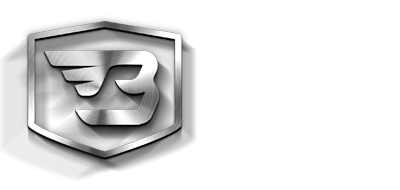Lots of focus goes into the logistics inside a distribution or manufacturing center, which often leaves transportation strategies out of sight and out of mind. Transportation is a vital cog in the wheel, determining how your product gets to the customer, and ultimately, the end-user. How can you form a transportation strategy that maintains the efficiency and cost-effectiveness you’ve prioritized within the walls of the manufacturing center? Below are a few guidelines to help you meet your desired outcomes and KPIs.
Start with your key objectives
What is your biggest priority in the realm of transportation? Defining your objectives is vital to fully develop a strategy that meets your company’s specific needs. Below are a few different objectives a business might choose to focus on:
- Improve on-time deliveries
- Reduce freight and carrying costs
- Improve visibility in the process
- Reduce handling and damage
- Improve relationships with vendors
- Reduce purchasing lead times
- Reduce carbon footprint and put a focus on sustainability
Make the big decisions
Now that you know the angle you want to approach from, you can make the most important decisions that will cause the most dramatic changes to your transportation strategy. The biggest decision any company can make is whether they should manage their own transportation or put it in the hands of a fleet. Would relying on another resource help you reach your goal? Or would it complicate a system you feel you can fine-tune to reach desired results? Choosing who takes care of transportation is the biggest decision in optimizing how transportation will take place.
You might find that this isn’t a decision you need to make—you may have already seen the need to hire a fleet, or you are clear that a fleet wouldn’t solve your problems. Think about what other big-picture questions might need a little attention. Are your current transportation assets the most efficient for your needs? Will you have to make a big financial shift to optimize transportation for your company? Consider what decisions will impact the most people and require the most resources.
Answer the less dramatic questions
With the big picture out of the way, the smaller (but still very important) details can get the attention they need. Once again, your corporation should ask introspective questions to get on the same page, decide the numbers and results you want to see, and tweak your strategy in order to see them. Here is another brief list of questions for consideration:
- How frequently do you need to ship and make deliveries?
- Are there minimum shipping orders?
- How far away from the distribution center are you willing to ship?
Let modern means assist you
You don’t have to crunch the numbers by hand and make all the decisions on your own. There is freight optimization software you can leverage that models a company’s shipments in order to see strengths and weaknesses clearly and create according solutions for specific customers.
Don’t lose sight of the warehouse
It might seem counterintuitive to focus your energy on warehouse efficiency while trying to improve transportation, but both aspects of the process need to be working smoothly in order for one to reach its highest potential. Ensuring that your in-house resources are being properly utilized and that you are at warehouse capacity is vital to meeting fulfillment requirements. Streamlining the flow inbound and through manufacturing can solve some logistical issues you may have blamed on inefficient transportation. Predictability is beneficial to your company’s carrier sourcing as well.
Set a benchmark and track the changes
Your current metrics are the starting point. Use them as a benchmark to measure the changes you see after implementing an updated transportation strategy. If you are seeing no improvement at all from your benchmark, or even a regression, consider whether you focused on the right key objectives at the start. If you are seeing a marginal improvement but hoped for a more drastic difference, consider the changes you might have thought weren’t necessary to make, or whether you didn’t make changes in a big enough degree to get the results you want.
Again, evaluating your success in comparison to past results is a great time to use freight optimization software. It can help you find minor changes that can make big impacts in cost, efficiency, and visibility.
Further, continuous improvement should be a pillar of your transportation strategy. Change is not made once to provide an infinitely successful system; it’s made over and over again to keep up with new technology and meet ever-changing needs. Keep record of where you started and how you’ve improved over time will help your transportation strategy evolve when needed. Document your entire strategy and share it with management—no effective changes will come if the process isn’t properly recorded and monitored by all involved.
Revamping your transportation strategy can improve your company’s business practices and relationships with vendors. Whether you are hoping to decrease overall costs or increase on-time and efficient deliveries, a more transparent and streamlined transportation strategy can help you reach multiple goals in a single stride.
